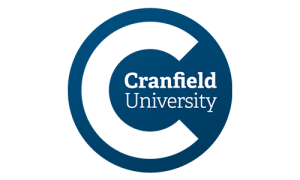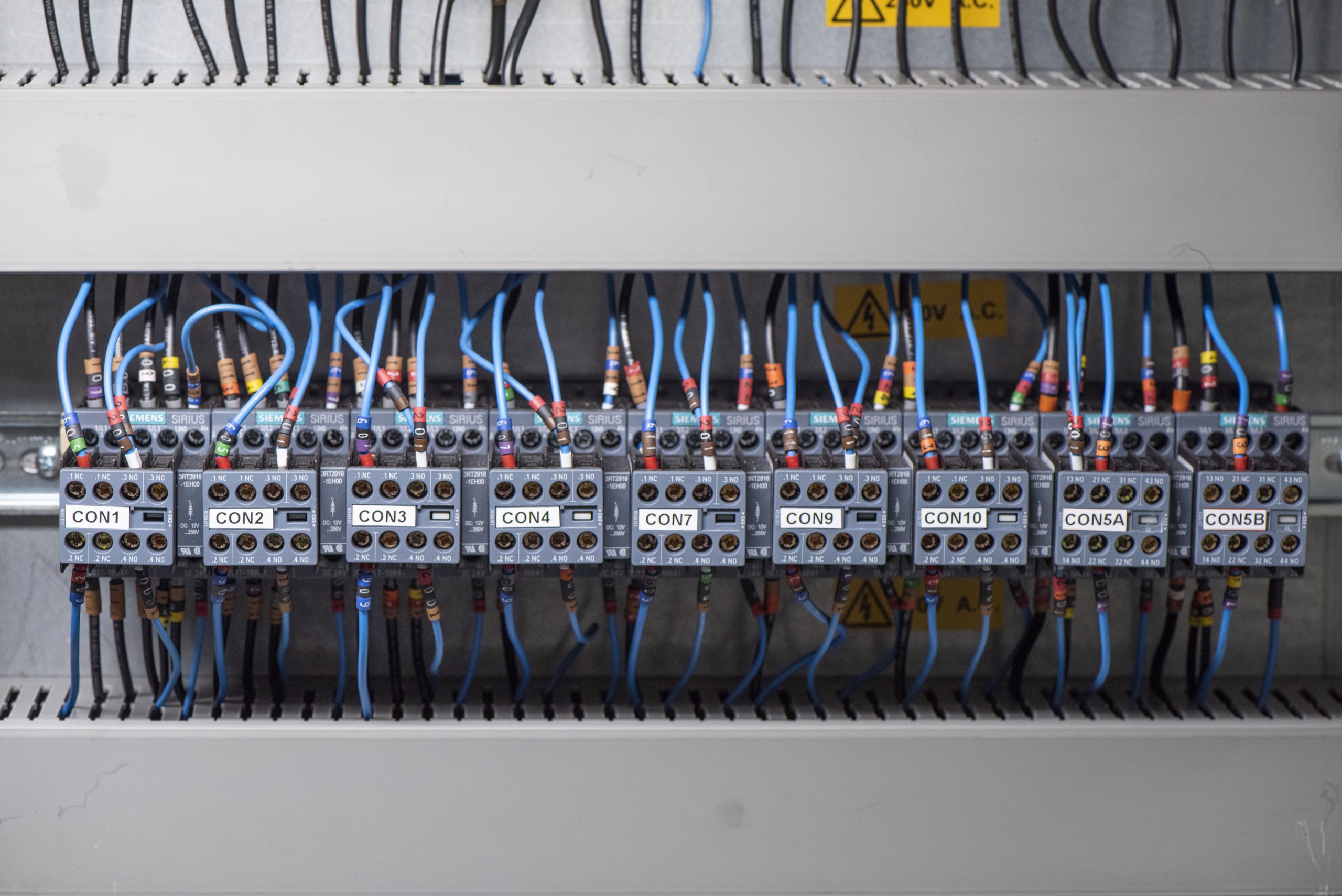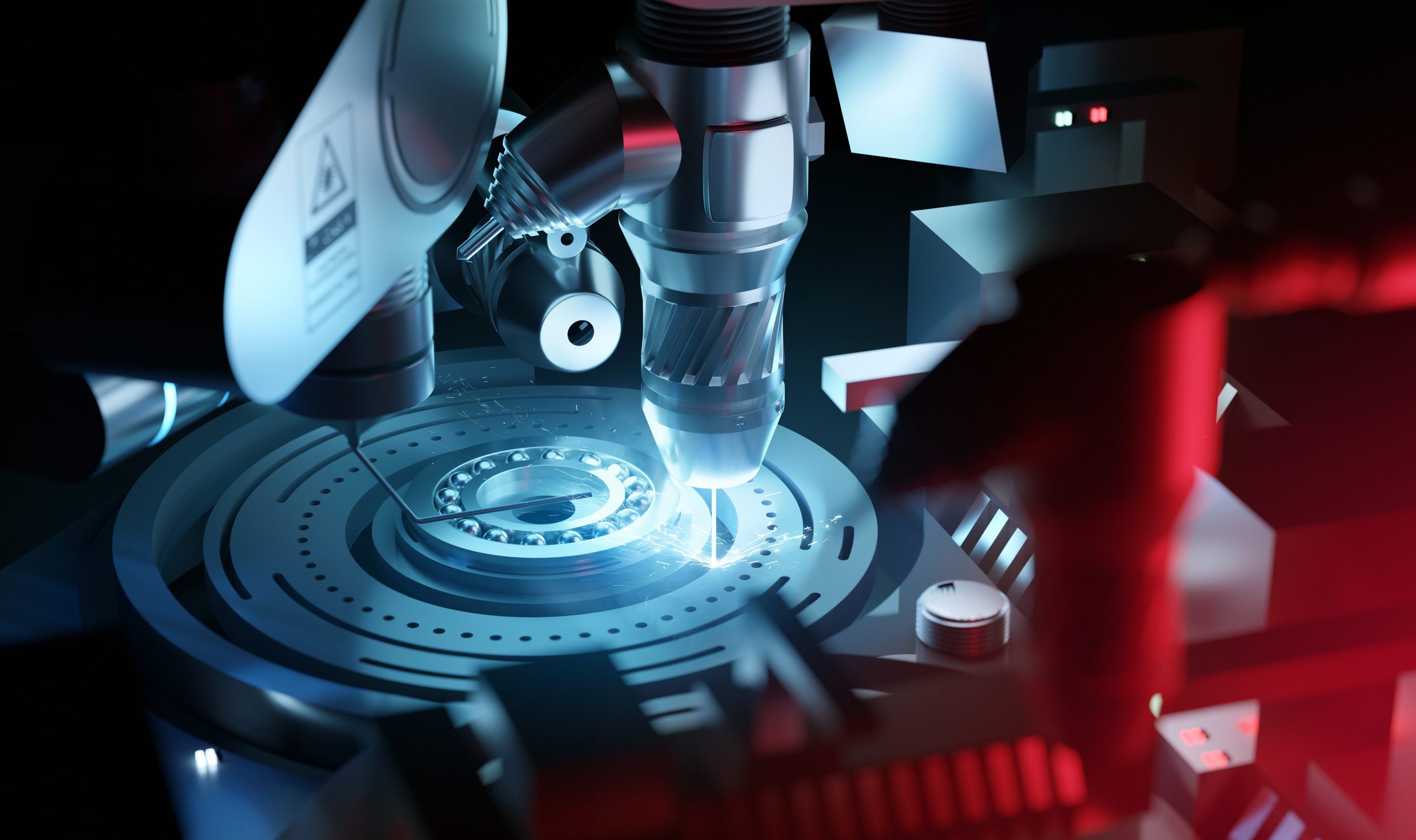KTP: Laser Welding in Vacuum
Overview
Cambridge Vacuum Engineering (CVE) is currently part of a knowledge transfer partnership (KTP) in collaboration with Cranfield University to further commercialise laser welding in vacuum (LiV) technology.
What is a KTP?
A KTP is a joint project between a UK university and a UK business, running for between 1 to 3 years. It aims to join the UK’s world-leading research sector (18 of the world’s top 100 universities are British and UK universities occupy spots 2 and 4) with UK businesses.
This embeds the Union’s world-beating academic knowledge into its commercial sector and equally ensures that the research sector is aware of the needs of modern business. This gives rise to a tripartite arrangement between the university, company, and the ‘KTP Associate’ responsible for managing the partnership and executing the project.
Grants are awarded by the funding body, Innovate UK, and there are currently 800 KTPs running throughout the country. The projects have been very successful, bringing an average of £8 of return for every £1 investment.
Project Overview
This KTP is a partnership between CVE and Cranfield University’s Welding and Additive Manufacturing (WAM) Centre towards developing laser in vacuum welding. The project started in January 2021 with wide-ranging goals covering both process and machine.
The process side involves understanding the response of materials to different parameters in LiV welding while the machine side involves solving the engineering problems preventing LiV welding’s industrial viability.
After all, a single good weld is of little inherent value, a machine must be able to produce excellent welds consistently, for many years.
Cranfield University
This exclusively postgraduate institution traces its roots back to the aftermath of the Second World War, when the Royal College of Aeronautics was established at the RAF airbase of Cranfield, Bedfordshire, in 1946.
In 1969, the College was incorporated by Royal Charter into the Cranfield Institute of Technology, by now having expanded from aeronautics to cover manufacturing and management.
Today, Cranfield covers a broad variety of sectors, from aerospace and defence to environment and agrifood. The university’s reputation for high-quality and commercially relevant research makes it a trusted industrial partner in many sectors.
Cranfield has been offering its Welding MSc course for 60 years, with many of the UK’s largest companies’ manufacturing departments containing Cranfield alumni, from senior management down to junior engineers. At the recent 60th Anniversary of the Welding MSc, many of these graduates returned to where their long and illustrious careers began to celebrate Cranfield and the WAM Centre’s proud history and to look forward to a bright and innovative future.
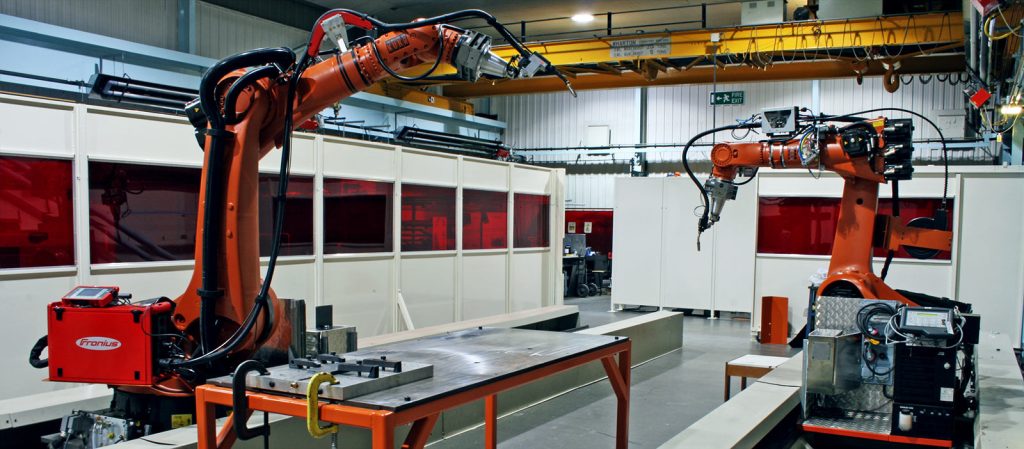
Figure 1. Cranfield’s welding and additive manufacturing facilities. Image courtesy of Cranfield University.
Cambridge Vacuum Engineering
CVE also has a long and accomplished history, with more than 60 years of experience in manufacturing electron beam welding machines and vacuum furnaces. Having delivered over 1,000 machines to customers across the globe, we have decades of experience and institutional know-how of building and maintaining vacuum power beam welding systems.
With offices in the US and China, and the main manufacturing site just outside Cambridge, UK, CVE offers rapid, high-quality service support to its international customer base. The machines leaving the factory show both performance and longevity, with some of our customers still happily using 25+ year old machines.
A few years ago, we expanded our offering to include laser in atmosphere welding machines and laser welding in vacuum machines. Conventional laser welding is an established technology and CVE’s expertise with tooling, operator interfaces and safety made the expansion to conventional laser welding machines seamless. With vacuum laser welding, a newer technology, more complex challenges requiring innovative solutions were encountered.
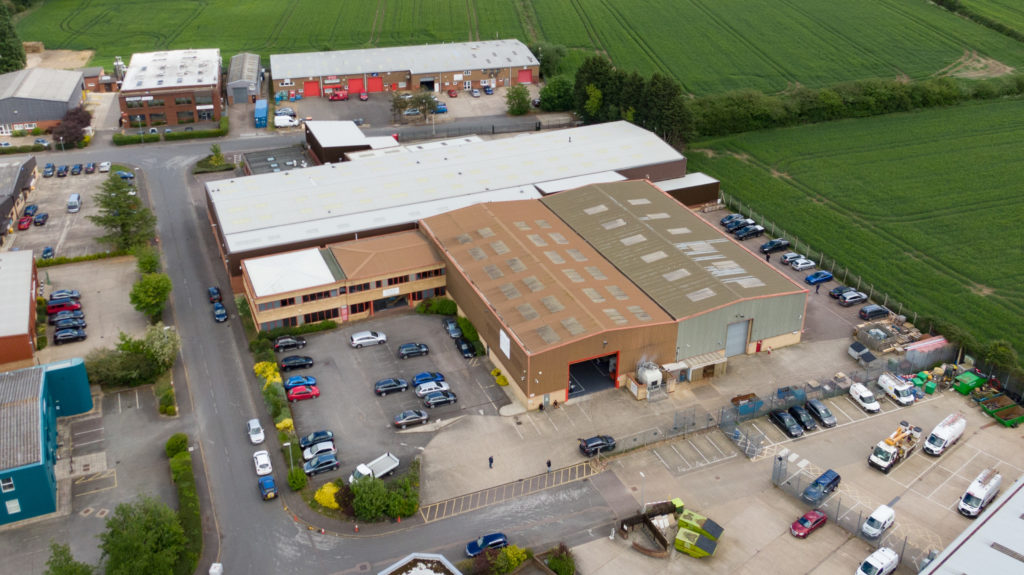
Figure 2. CVE’s site.
Laser in Vacuum Welding: A History
Laser welding in a vacuum was initially developed in Japan in the 1980s. It was developed to disperse the plasma plume so detrimental to high-power CO2 lasers. Vacuum laser welding did not see particular interest or uptake until the early 2010s.
Over the last years both academic and industrial interest has grown significantly, with the technology being a more reliable and economic alternative to electron beam in some applications, and a higher quality alternative to conventional laser welding in others.
Laser in Vacuum Welding: Benefits
Laser in vacuum allows penetration depth and weld quality previously only achievable with electron beam welding, while offering a flexibility and reliability that EB can struggle to match.
This is due to the physics of vacuum, with the reduction in boiling point seen by all materials at reduced pressure allowing more material to be vaporised by the laser beam and the weld to thereby penetrate deeper.
The quality comes primarily from the ease of outgassing in vacuum as gases within the keyhole suffer no impediment to their escape from surrounding atmospheric gas, instead the vapourised metal can escape the keyhole and melt pool before the material resolidifies and pores are formed.
The plume normally seen above the weld is mostly absent in vacuum (depending on the vacuum level) due to the same ease of dispersal in vacuum, this reduces the friction on the melt pool partially responsible for spatters.
The advantage over electron beam comes from the laser beam itself, being unaffected by magnetic fields and not producing X-rays. The comparison between the two technologies is complex and both have their own advantages and drawbacks. For a full comparison of conventional laser, electron beam, and laser in vacuum you can read our post about it here.
Laser in Vacuum Welding: Challenges
The challenges involved in LiV welding can be sorted into two broad categories: process challenges, and engineering challenges in the design of machines.
Process challenges are application-specific (root porosity and bulging problems in higher penetration applications, for example) and require a reliably working machine to test out and solve. A reliably working machine requires overcoming at least some of the engineering challenges involved in LiV welding, making these the priority of the project.
Now that these challenges are overcome, focus turns to application-specific challenges, and the assessment of LiV’s suitability for sectors.
The KTP So Far
The first task for the team was an understanding of what exactly the challenges facing us were. The problem of window contamination was intuitively understandable but needed detailed study to fully comprehend and then solve. With a working prototype available from CVE’s internal development, this was used as the starting point. After some weeks of testing, the window contamination problem was well understood, and this knowledge was used as the base for its eventual solution.
The window being referred to is the laser coupling-in window, this is a crucial component as it allows the processing laser beam into the vacuum chamber. As the laser beam leaves the laser, it is launched into a fibre, which is in turn connected to a laser head which collimates and focusses the laser. The laser, fibre delivery, and focussing head are all located outside the vacuum chamber, the laser must shine through a highly transparent (to the laser’s wavelength) window and thereby weld in the chamber. Welding, being an energetic process, throws up debris which contaminates the window, absorbing laser energy and making the window eventually unusable.
Window contamination was found to take two forms: metal vapour, and spatters. Metal vapour being the metal evaporated from the weld and leaving the keyhole, this travels and deposits on the first surface it meets. If this surface is the laser coupling-in window, the window slowly loses transmissivity over its entire face leading to a loss of power reaching the weld, and eventually defocussing the beam as the window heats and deforms turning the otherwise flat window into a curved lens (known as thermal lensing). This is very detrimental to the weld and, while some power loss is tolerable and can be compensated for, the combined effect of power loss and thermal lensing lead to unacceptable welds.
The second form of contamination, spatter, is the more random of the two. Metal vapour can be expected to provide a constant and predictable degradation of the window’s performance. Spatters, on the other hand, are ejected at essentially random directions from the weld. The spatters vary in size and speed, with larger and faster spatter being produced at the higher powers and penetration depths. Spatters striking the laser window produce small spots opaque to the laser, these spots then absorb heat from the laser each time it is fired and can expand slowly over time, as surrounding material is heated and made less transmissive leading to a runaway process. If a spatter is large enough, it can make a window unusable in a matter of seconds.
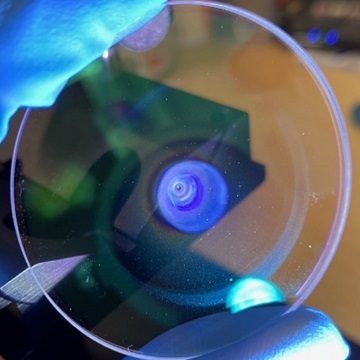
Figure 3. A window irreparably damaged by a single large spatter.
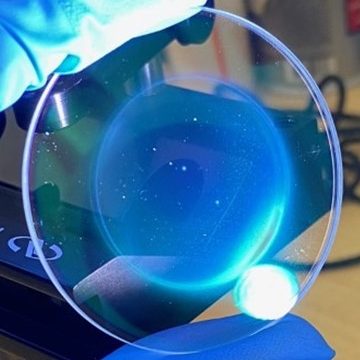
Figure 4. A window significantly degraded by metal vapour.
Developing a Solution
The above knowledge was instrumental in developing a solution as it allowed concepts and ideas to be adapted based on evidence. For example, an early concept solution was a special coating on the window to stop metal vapour adhering to it, like anti-fog coatings on glasses. Without detailed knowledge of the problem, it would be easy to think this is a complete solution. However, with more detailed knowledge we can immediately spot that this does not solve the spatter problem as no coating can both stop a flying spatter and be extremely transparent to IR radiation.
The first window protection system prototype, while effective at protecting the laser window for a time, caused a significant secondary problem: soot generation. This has been covered in some detail in our previous post so head over there to read more on the subject. To combat the soot generation problem, an entirely new solution was required, and armed with the knowledge of the window contamination problem and the soot problem, it was developed and tested. The new solution avoids the soot problem and produces long window lifetimes on the order of hours at medium powers. Simultaneously, a window exchange system was designed for rapid change-over of laser windows. The long window lifetime and short exchange time allow the LiV process to compete with EB’s comparable tungsten filament change process, a key milestone in commercialisation of the technology.
With the window problem solved for many common applications, the team now turned its focus to applications testing for different industries. Laser in vacuum has seen some high-quality academic research focusing on its applicability to specific industries, and academic institutes, end users, and manufacturers across the globe have conducted their own testing. All that said, LiV welding currently has low market penetration, though ever more organisations are beginning to see its benefits over their current process of choice (be it EB, standard laser, or even multi-pass SAW). Due to this currently low uptake rate and the sheer number of possible uses for the technology, most have not been tested. Of these applications, especially processes where EB is the incumbent, most do not need extensive testing to produce welds matching or exceeding the required quality. This is due to the stability and robustness of the LiV process, with welds being defect-free as standard, and the similarities in weld profile between EB and LiV.
The applications testing performed has ranged from very shallow sub-mm to over 30mm penetration welds. The process of translating variable process parameters (speed, power, oscillation, spot size etc.) into weld features conforming to specific requirements (minimum/maximum weld height/underfill, half-depth width, penetration depth, root radius etc.) is not always a simple one and can require significant process understanding. Fortunately, this understanding is built upon by each application tested and the partnership has now built a strong base of knowledge about the optimal ways to achieve desired results in a diverse range of applications.
Throughout the project, the team has been using every new development or piece of knowledge to benefit running client contracts and to provide new options for interested clients. With a strong base of technical process knowledge and proven solutions to previously critical challenges, the partnership is now working to realise the potential of this powerful new tool in the joiner’s arsenal.
Highlights
The project has had many great moments worth celebrating. The successful test of the soot-free window protection system was a great milestone, providing a solution to one of the thorniest two-pronged challenges facing vacuum laser welding.
Another great pleasure was the conference and workshop presentations over the past year, at the IIW 2022 Annual Assembly in Tokyo and at the High Power Laser Welding workshop organised by the Association of Industrial Laser Users at the Manufacturing Technology Centre. These meetings were much-valued opportunities to share our progress with the wider welding community, and we are very grateful to the host organisations.
A further highlight was the nomination for the KTP Future Leader award, a great honour and privilege to see some of the other ground-breaking KTP projects currently running.
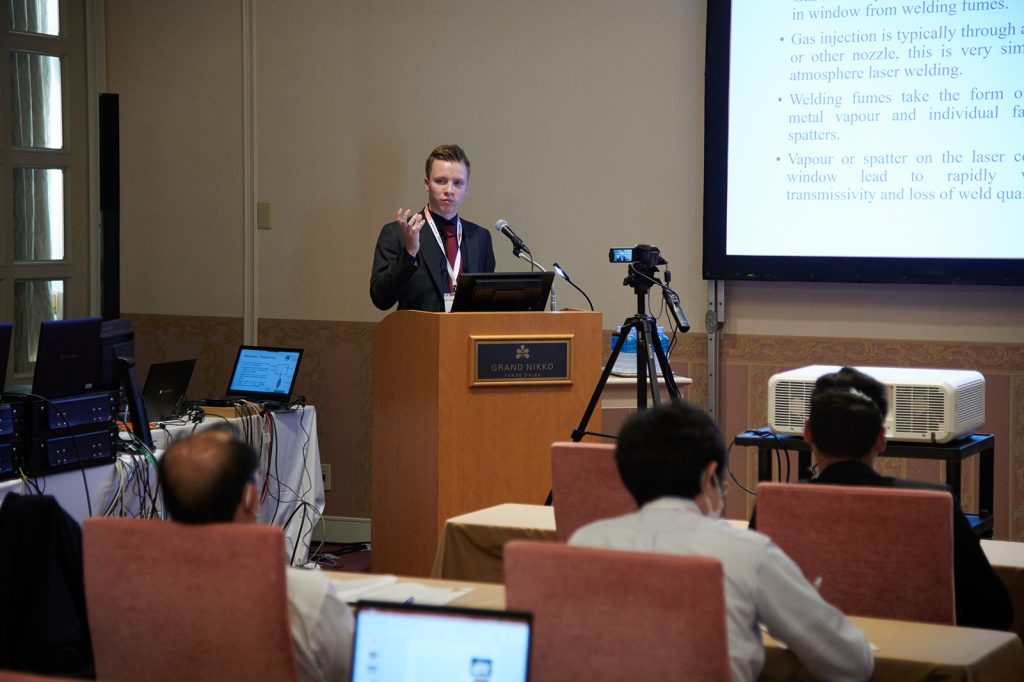
Figure 5. IIW Conference.
Looking Ahead
The future for laser in vacuum welding is bright, many industries could benefit from the quality-level and flexibility provided by laser in vacuum.
The energy and time savings the technology represents for thicker sections are very significant and could prove crucial to lowering the carbon footprint of manufacturing sustainable energy infrastructure.
The full potential of LiV is yet to be realised, but many of the barriers present just a few years ago have now been removed by the hard work of multiple research and commercial organisations.
The number of papers published on the topic per year has risen dramatically over the last 5 years, and the readiness of the technology is beginning to be noticed in industry.
As with most new technologies, progress is incremental and contributions are made by a host of different people and organisations from across the world, until the technology is finally ready for true implementation and its usage sees sudden and rapid growth.
Laser in vacuum welding has reached this ready point, and we look forward to realising the benefits it will bring to our customers.

The KTP is funded by Innovate UK and in collaboration with Cranfield University.
